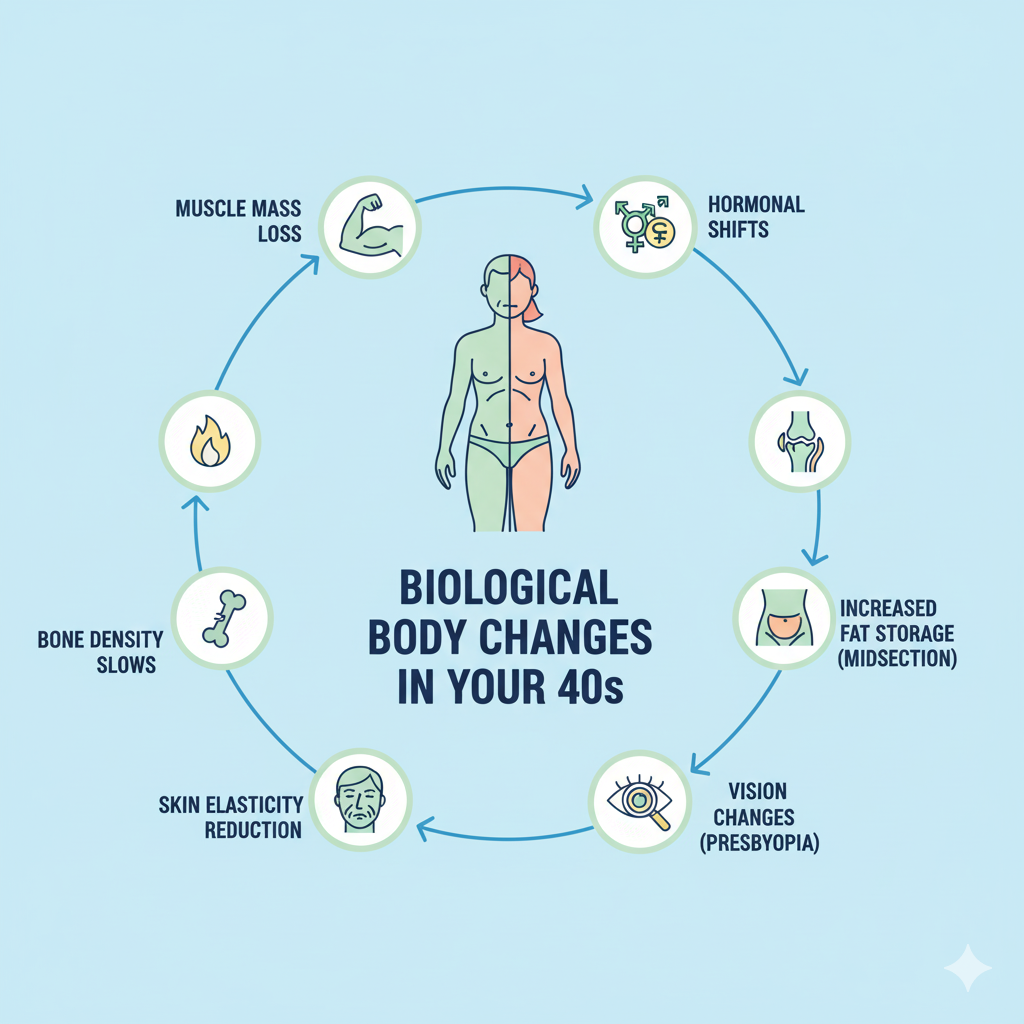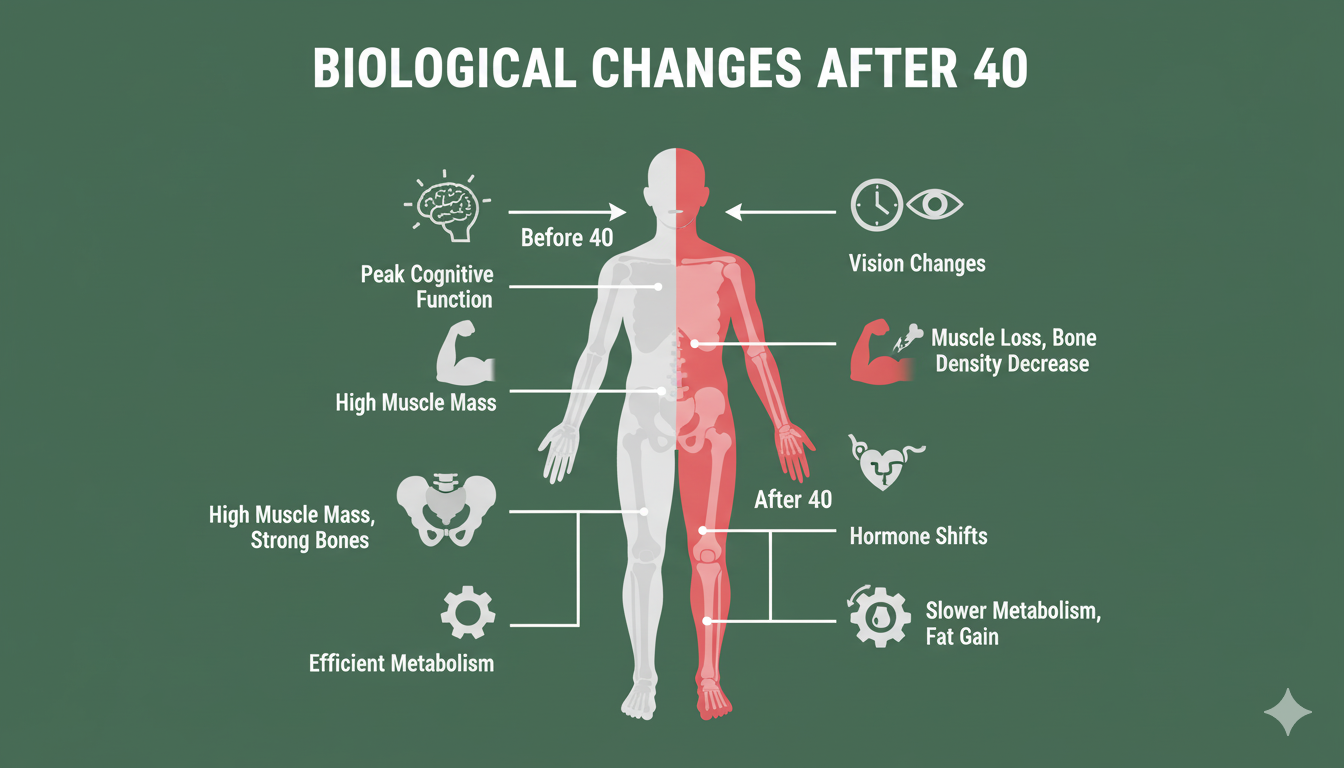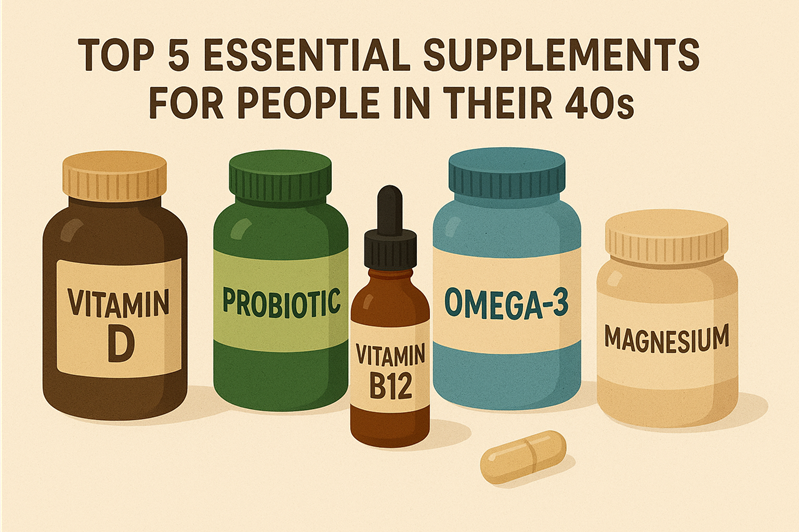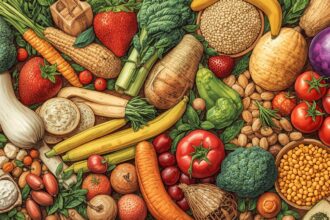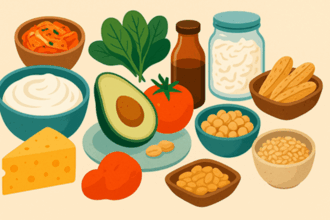[The 40s Redesign, Part 2]: That “40s Belly” Is Not Just Weight Gain—It’s a Different Kind of Fat
Welcome back to the 40s Redesign.
In Part 1, we established why our bodies feel so different. We learned that the “check engine” light is on because our metabolism (BMR) is slowing down and our hormones (estrogen, testosterone) are on a wild ride.
This brings us to the most common, frustrating, and visible symptom of this change: the “40s belly.”
You know what I’m talking about. It’s the stubborn fat around the middle that seems to appear out of nowhere and refuses to leave, even if you’re doing “all the right things.”
Here is the single most important thing you need to understand: This is not the same fat you dealt with in your 20s. It’s not just “weight gain”; it’s a fundamental change in what your body is storing, and where. And it’s a critical signal about your health.
1. Not All Fat Is Created Equal: Subcutaneous vs. Visceral
To understand the enemy, you have to know its name. Your body has two main types of fat, especially in the abdominal area.
- Subcutaneous Fat: This is the “pinchable” fat. It’s the soft layer that sits just beneath your skin (think “love handles”). While you might not love it aesthetically, this fat is relatively harmless. It’s just stored energy.
- Visceral Fat: This is the “hidden” fat. It’s the enemy. Visceral fat doesn’t sit under your skin; it forms deep inside your abdominal cavity, packing itself around your vital organs like the liver, pancreas, and intestines. You can’t pinch it, but it’s what makes your belly feel “hard” or protrude.
In your 20s and 30s, most weight gain was subcutaneous. In your 40s, your body’s new hormonal instructions tell it to prioritize storing visceral fat.
2. The 40s Conspiracy: Why Does Visceral Fat Spike Now?
So, why the sudden change in storage policy? It’s a perfect storm of three factors we touched on in Part 1, all conspiring to create visceral fat.
- The Hormone Shift (Again): As estrogen levels drop in women, fat storage shifts from the hips and thighs directly to the abdomen. For men, as testosterone drops, the same thing happens. These hormones were the “traffic cops” directing fat to safer storage zones (subcutaneous). With them gone, fat storage becomes a free-for-all, and the “easiest” place to dump it is deep in the belly.
- The Cortisol Connection: Your 40s are often the peak-stress decade—career pressure, aging parents, raising kids (or all three). This chronic stress means your body is marinating in the stress hormone, Cortisol. And cortisol has one primary job: prepare for famine (which never comes). It does this by taking any available energy (sugar, fat) and shoving it into the most accessible, long-term storage unit it has: your visceral fat cells. This is the “stress belly” you’ve heard about.
- The Rise of Insulin Resistance: This is a new player. As we age, and especially as we gain a little weight, our muscle and liver cells can become “numb” to the hormone insulin (whose job is to move sugar out of the blood). When cells are “insulin resistant,” the sugar has nowhere to go. Your pancreas panics, pumps out more insulin, and this high-insulin environment is a powerful fat-storage signal. It tells your body: “Red alert! Store all excess calories as fat. NOW.” And its favorite storage location? Visceral fat.
3. This Isn’t About Your Jeans. It’s About Your Life.
I cannot stress this enough: Visceral fat is not a cosmetic problem. It is a metabolic crisis.
Unlike “passive” subcutaneous fat, visceral fat is “active.” Think of it as a toxic, angry organ in its own right. It pumps out a constant stream of inflammatory chemicals (called cytokines) and free fatty acids directly into your liver and bloodstream.
This inflammatory soup is the direct cause of, or major contributor to, almost every major chronic disease of aging:
- Type 2 Diabetes: It’s a primary driver of the insulin resistance we just discussed.
- Heart Disease: It raises your blood pressure, messes up your cholesterol (high LDL, low HDL), and inflames your arteries.
- Non-Alcoholic Fatty Liver Disease (NAFLD): Your liver is ground zero for all the toxins this fat pumps out.
- Certain Cancers: Including breast and colorectal cancer, which are linked to chronic inflammation.
- Cognitive Decline: The inflammation it causes doesn’t just stay in your body; it crosses the blood-brain barrier, contributing to brain fog and increasing the risk for Alzheimer’s and dementia.
Conclusion: Know Your Enemy to Defeat It
That “40s belly” is not a sign of failure. It’s a biological warning sign. It’s your body’s way of telling you that its internal environment—driven by new hormones, new stress, and new metabolic rules—is in trouble.
The good news? Visceral fat is metabolically active, which means it also responds (and can shrink) much more quickly to the right changes in diet and exercise than stubborn subcutaneous fat.
But to beat it, you need more than just “eating less and moving more.” You need a new strategy. And that strategy begins with rebuilding your body’s calorie-burning engine: muscle.
In Part 3, we’ll tackle the “secret” enemy that’s accelerating all of this: Sarcopenia, or the age-related muscle loss that’s robbing you of your metabolic furnace.
What’s been your experience with this “new” type of fat in your 40s? Does this explanation change how you see it? Let me know in the comments.
(Blog Post Ends)
